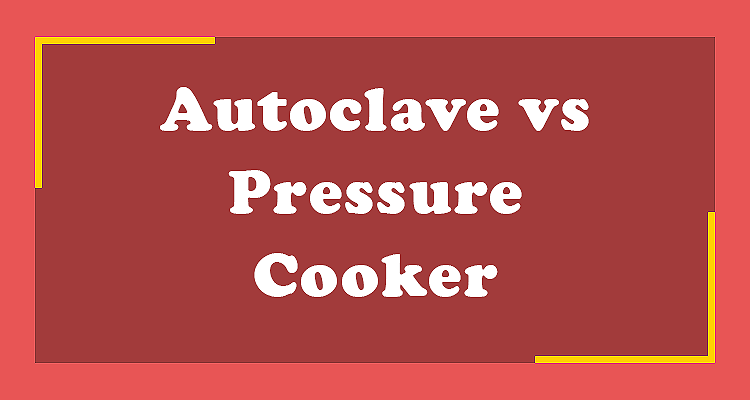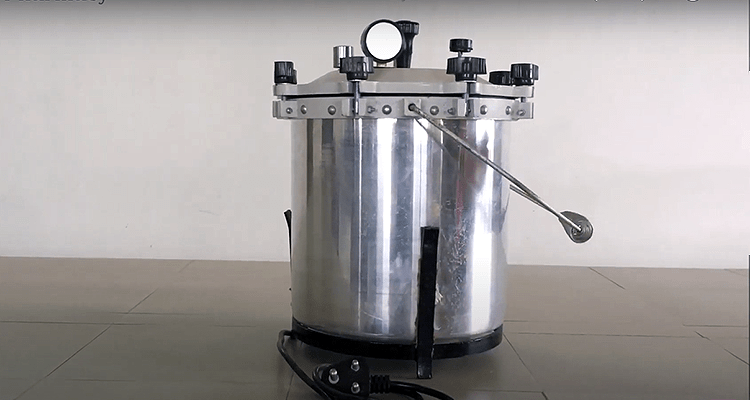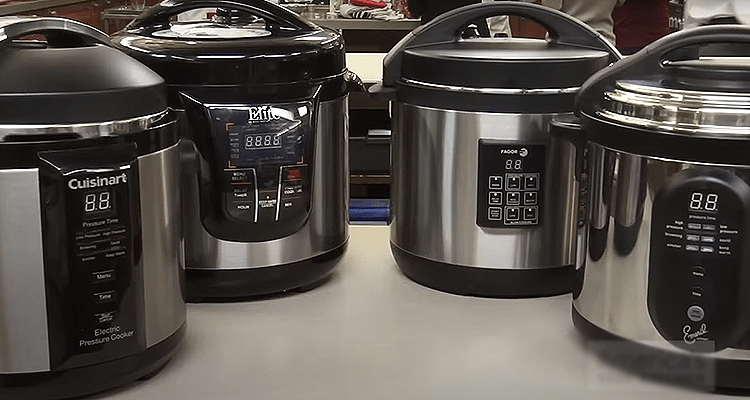
Introduction to Autoclaves and Pressure Cookers
Autoclave vs Pressure Cooker, the comparison unfolds as we delve into the realm of sterilization and cooking efficiency. This insightful introduction explores the multifaceted features that distinguish autoclaves from pressure cookers.
Autoclaves utilize steam under high temperatures and pressure to achieve optimal sterilization results, making them indispensable in various industries such as healthcare and laboratories for eliminating harmful microorganisms. With their sophisticated control systems, autoclaves ensure precise performance throughout the sterilization process.
Pressure cookers cater to culinary enthusiasts with their ability to rapidly tenderize tough meats and enhance flavors through increased internal pressure generated by trapped steam within their sealed vessels. While both appliances harness pressurized steam, it is evident that they serve distinct purposes yet share a fundamental principle, a testament to human ingenuity continually reimagining ways to harness nature’s power for our benefit.
What is Autoclave?
In the world of healthcare, laboratories, and beyond, a marvel of modern science is known as the autoclave. But what exactly is an autoclave, and why is it such a vital instrument?
An autoclave is a high-pressure, steam-powered device that sterilizes, disinfects, and renders objects microbe-free. Its method is simple yet effective: steam and elevated temperatures, typically between 121°C to 134°C, combine to annihilate harmful microorganisms, including bacteria, viruses, and spores.
From life-saving medical instruments in hospitals to pristine lab glassware, autoclaves ensure purity and safety. Discover the science behind these unsung heroes that safeguard health and research, one sterilization cycle at a time.
What is a Pressure Cooker?
A pressure cooker, a true kitchen workhorse, is more than just a pot with a lid. It’s a culinary powerhouse that revolutionizes meal preparation. So, what is a pressure cooker?
A pressure cooker is a sealed cooking vessel that uses steam pressure to cook food quickly and efficiently. The pressure cooker is easy to use, and the magic lies in the high-pressure environment, which allows water to reach a higher boiling point, drastically reducing cooking times. Whether tenderizing tough cuts of meat, speeding up bean and legume cooking, or whipping up mouthwatering stews, pressure cookers are your time-saving kitchen companion.
Unleash the potential of this culinary gem to create delicious, nutritious meals in a fraction of the time.
Purpose and Uses of Autoclaves and Pressure Cookers
The purpose and uses of autoclaves and pressure cookers in various industries are indispensable. Autoclaves, used primarily within the medical field, provide a reliable method for sterilization by subjecting items to high temperature and pressure. These devices use steam generated from the water inside to thoroughly eliminate bacteria, viruses, fungi, and other microorganisms from surgical instruments, laboratory equipment, glassware, and even certain pharmaceutical products.
Pressure cookers have found their place in countless kitchens worldwide as an efficient cooking tool. With their ability to quickly tenderize tough cuts of meat or legumes while preserving nutrients and flavors due to the increased pressure environment created inside them, these culinary appliances offer convenience for preparing diverse recipes. Some modern pressure cookers also incorporate features such as sauté settings or rice-cooking modes that further broaden their usability in everyday cooking scenarios.
We possess the expertise and resources to ensure impeccable hygiene in healthcare facilities and enhance the taste of your meals to a superior level. You can rest assured that we will accomplish these tasks with the utmost precision and excellence.

Key Differences Between Autoclaves and Pressure Cookers:
Temperature and Pressure Levels
When comparing these two sterilization devices, one of the key differences lies in their temperature and pressure levels. Medical and laboratory equipment require specialized sterilization machines called autoclaves. These machines are different from the typical pressure cookers in our kitchens because they can handle a broader range of temperatures and pressures needed to ensure complete sterilization. Autoclaves typically operate from 121 to 134 degrees Celsius (250-273 degrees Fahrenheit) with pressures between 15 psi (pounds per square inch) to as high as 30 psi.
On the other hand, Pressure cookers commonly reach temperatures up to around 120 degrees Celsius (248 degrees Fahrenheit) under pressures running about 15 psi. These distinctions exist due to the specific objectives associated with each device. While autoclaves aim at efficiently killing all forms of microbial life, including bacteria spores and viruses, pressure cookers primarily focus on softening tough foods by applying steam heat within a sealed vessel.
Thus, this discrepancy in temperature and pressure levels underscores how autoclaves prioritize absolute sterility outcomes in professional settings that require thorough disinfection protocols far beyond those needed for culinary purposes addressed by simple home-cooking appliances like pressure cookers.
Types of Food and Items Used for Sterilization/Cooking
The key differences between autoclaves and pressure cookers are worth exploring when it comes to sterilizing and cooking. Autoclave vs pressure cooker: these two appliances stand distinctly apart in their design, functions, and applications. An autoclave is a sophisticated device predominantly used in medical settings for sterilization. With its high temperatures exceeding 250°F and pressurized steam environment, an autoclave effectively eradicates all potential pathogens from surgical equipment, laboratory instruments, or medical waste.
On the other hand, a pressure cooker is a versatile kitchen companion capable of cooking various types of food efficiently by utilizing steam under controlled pressures of up to 15 psi. This household appliance enables faster cooking times while preserving flavors and nutrients through its hermetic sealing mechanism that locks moisture within.
Regarding the types of food and items used for sterilization/cooking in each appliance, an autoclave primarily focuses on objects requiring complete sanitation, such as glassware or metal tools used in laboratories or hospitals. These include Petri dishes, pipettes, scalpels, or forceps, which demand uncompromised sterility due to their contact with contaminants potentially harmful to healthcare professionals or patients.
Time Required for Sterilization/Cooking
Autoclave vs pressure cooker: One key difference is the time required for sterilization or cooking. Autoclaves, typically used in medical and laboratory settings for sterilizing equipment, require a significantly longer duration to complete sterilization. The intricate nature of their intended purpose demands an elaborate process that involves heating objects at high temperatures and subjecting them to intense steam pressure. As a result, autoclaving cycles generally span several hours to ensure the effective eradication of pathogens and microorganisms.
On the contrary, pressure cookers are primarily designed for efficient cooking by utilizing high-pressure steam within a sealed environment. These appliances operate at much lower temperatures than autoclaves but generate higher pressures more quickly due to their smaller size. Consequently, the time required for thorough cooking using pressure cookers is substantially shorter than with autoclaves, often ranging from minutes to an hour, depending on the desired recipe or ingredient prepared. Thus, when considering clinical sterility versus culinary efficiency, understanding these diverging temporal aspects proves crucial in choosing between an autoclave and a pressure cooker according to practical needs and requirements.
Pros and Cons of Using an Autoclave
Pros of Using an Autoclave:
Effective Sterilization: Autoclaves are highly effective at killing and deactivating a wide range of microorganisms, including bacteria, viruses, fungi, and spores, ensuring the complete sterilization of objects and substances.
Reliability: Autoclave processes are consistent and reliable, making them a trusted method for sterilization in healthcare, laboratories, and industrial settings.
Speed: Autoclaves work quickly, sterilizing items in minutes, much faster than many other sterilization methods.
Versatility: Autoclaves can sterilize various materials, including surgical instruments, laboratory glassware, and textiles.
Environmentally Friendly: Autoclaves use steam as a sterilizing agent, which is eco-friendly and leaves no harmful residues.
Cons of Using an Autoclave:
Cost: Autoclaves can be expensive to purchase and maintain, which may be a barrier for smaller facilities or laboratories.
Size and Space: Industrial autoclaves can be large and require significant space, which may not be feasible for some settings.
Training Required: Proper operation of an autoclave requires training to ensure safety and effectiveness. Improper use can lead to accidents or inadequate sterilization.
Maintenance: Autoclaves need regular maintenance to function optimally, which adds to the overall cost of ownership.
Limited Compatibility: Some materials or items may not be suitable for autoclave sterilization, as the high temperatures and pressure could damage them.
In simple terms, autoclaves are great machines for getting rid of germs and keeping things clean. However, they can be expensive to buy and maintain, take up much space, and require proper training. So, while they are beneficial, it’s important to consider whether they are the right choice for your needs.
Pros and Cons of Using a Pressure Cooker
Pros of Using a Pressure Cooker:
Time Efficiency: Pressure cookers significantly reduce cooking times by utilizing high-pressure steam, making them a time-saving kitchen appliance.
Energy-Efficient: They use less energy than traditional stovetop cooking or oven baking, leading to cost savings and reduced environmental impact.
Retains Nutrients: Pressure cooking preserves more nutrients in food due to shorter cooking times and minimal exposure to oxygen and water.
Versatility: Pressure cookers can be used for various recipes, from soups and stews to grains, meats, and vegetables.
Enhanced Flavor: The sealed environment intensifies flavors and produces more tender, flavorful dishes.
Cons of Using a Pressure Cooker:
Learning Curve: Beginners may find getting used to pressure cooking and the associated safety precautions challenging.
Safety Risks: If not used properly, pressure cookers can be dangerous. Accidental steam release, overfilling, or improper sealing can lead to accidents.
Limited Cooking Techniques: Certain cooking techniques like browning or sautéing may not be as effective in a pressure cooker.
Cost: High-quality pressure cookers can be an investment, although they can pay for themselves over time in energy savings.
Noise and Maintenance: Pressure cookers can be noisy when the steam is released, and they require regular maintenance to ensure the sealing mechanisms work correctly.
In summary, pressure cookers offer significant advantages regarding time and energy efficiency, nutrient retention, and flavor enhancement. However, they require proper handling and safety precautions and a learning curve is involved in mastering their use. The initial cost and regular maintenance are also factors to consider when deciding whether to use a pressure cooker in your kitchen.

Buying Guide: Which is Right for You?
When deciding between an autoclave and a pressure cooker, it is crucial to consider your specific needs and requirements carefully. Autoclaves are very useful for keeping doctors, dentists, and researchers safe. They use heat and steam to ensure all the equipment they use is clean and germ-free. With their advanced features, such as vacuum capabilities and high-pressure steam generation, autoclaves provide efficient sterilization even for items that may be heat or moisture-sensitive.
Meanwhile, pressure cookers are known for making cooking easier by significantly reducing the cooking time through increased heat and pressure levels inside a sealed pot. While predominantly known for preparing delicious meals efficiently, some modern pressure cookers now offer additional functionalities like canning or sous vide cooking techniques. The final decision ultimately depends on prioritizing sterilization reliability or diverse cooking options within your personal or professional context.
FAQ’s
While commonly used in these settings, various applications for autoclaves beyond healthcare exist. Autoclaves are also utilized in commercial kitchens, beauty salons, tattoo parlors, research labs, and even some manufacturing processes where sterility is essential.
Yes, both appliances utilize steam; however, the purpose behind their usage differs significantly. Pressure cookers primarily rely on steam generation for cooking food quickly under high pressure to tenderize ingredients.
On the other hand, an autoclave uses steam to kill microorganisms by subjecting them to extreme heat and pressure during sterilization procedures.
Unfortunately not. Regular household pressure cookers are not designed or certified for proper sterilization standards required in medical or laboratory settings. They need the necessary controls and precision to provide consistent results compared to dedicated autoclaving equipment engineered explicitly for this purpose.
Maintaining regular maintenance schedules alongside validation tests ensures the reliable operation of your autoclave while adhering to industry standards. This practice helps promptly identify malfunctions while ensuring that all cycles meet the desired temperature thresholds required for effective disinfection or sterilization, ultimately providing accurate results you can trust.
Final Thoughts to Autoclave and Pressure Cooker
When considering the topic of autoclave vs pressure cooker, it is crucial to acknowledge the distinct characteristics and applications that set these two devices apart. An autoclave, often used in laboratory settings or medical facilities, operates under high temperature and extreme pressure conditions to achieve sterilization effectively. This device utilizes heat-generated steam to eliminate all microorganisms on surfaces or within materials.
In contrast, a pressure cooker is a versatile kitchen tool to expedite cooking processes through sealed pressurized environments. While an autoclave ensures complete sterility by subjecting items to prolonged exposure, a pressure cooker offers convenience for those seeking efficient meals without compromising nutritional value or taste.
Discovering how steam powers various machines, each designed for specific industries and purposes, is fascinating. Keep this in mind when choosing between them. Rest assured, you’ll find the perfect one for your needs!
[…] Sous Vide vs Pressure Cooker debate has gained significant attention in the culinary world, stirring up discussions around flavour and […]